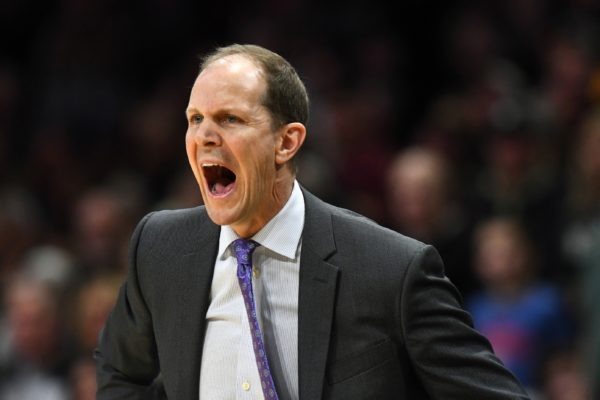The 2018-19 Pac-12 Elite: What’s Setting the Top Teams Apart
Posted by Adam Butler on November 1st, 2018With Gonzaga in the top five nationally and some of the traditional western powers not-or-barely ranked, it’s unclear where the conference’s top team lies. Pac-12 media came to the conclusion last month that it will be Oregon, UCLA Washington and Arizona. As we approach season tip-off early next week, let’s explore each of those squads and what differentiates them as the conference elite.
Oregon
- Why they’re here: Introducing the best freshman class of Dana Altman’s Oregon tenure to a sound cast of returnees.
- Summary: Altman has worked magic in Eugene with minimal continuity cemented by transfers, but this year is a little different. He has as much talent as he’s ever had but much of it is youthful, and last season was a little underwhelming with similar (albeit less heralded) youth. Of course many eyes will focus on Bol Bol – the fascinating 7’3” freshman talent — but don’t forget about Kenny Wooten, poised to be something like the next Jordan Bell. Wooten had the nation’s third-highest block rate (15.3%) a season ago and should be poised to progress. Meanwhile, senior Paul White is the kind of dynamic forward Altman has typically built around — 6’9” with a 14 percent defensive rebounding rate and a 35 percent three-point shooter. Further, Payton Pritchard (41% 3FG) might as well be a senior point guard (full disclosure: He is only a junior), and while the Ducks may appear to be light on guards – clearly critical to success at the college level – their on-paper talent suggests this may be a nationally underrated squad.
- Conclusion: Considering the Ducks’ mix of talented players and a proven (excellent) coach, Oregon should be the best team in the Pac-12.
UCLA
- Why they’re here: Projected lottery picks returning and incoming.
- Summary: It’s a familiar tale in Westwood: The Bruins are as talented as any team in the league if not the nation. Kris Wilkes may be the front-runner for Pac-12 Player of the Year while Jaylen Hands – a terrifically skilled big guard – inherits the reins from the last of the Holiday family. The other familiarity, of course, has been some of the underwhelming results of the Steve Alford era. In a Pac-12 with a low ceiling and what I’d consider a relatively high floor, the Bruins have the talent to win this thing outright and the pedigree to finish fourth.
- Conclusion: Despite the summary’s closing sentence, look for consistency from these Bruins as roles and responsibilities appear clearer than they perhaps have in the past. What does consistency yield? Well, for these Bruins it very well could be a conference title.
Washington
- Why they’re here: The Huskies return a Pac-12 First Teamer, the defensive Player of the Year, and basically the entirety of a 21-13 roster.
- Summary: Were they merely lucky or good last season? The Huskies outpunched their scoring differential (+7.09) in finishing with that commendable overall record. Mike Hopkins’ first season was an unequivocal success. It was also the first time a primary zone defense was introduced to the conference. Consequently (or coincidentally), the Huskies had the top defense in the league after having not finished better than seventh in defensive efficiency since 2012. Is this the trend for the Hopkins era in Seattle or the byproduct of a dynamic new system? I’m trending towards the former as Hopkins has more than 20 years of zone coaching experience.
- Conclusion: The Huskies might not be the most talented team in this league but they seem to enter the season as the most confident. Can we quantify that? Not really. But it’s going to count for something.
Arizona
- Why they’re here: Are they always here?
- Summary: Little is known about this Arizona team. Their top returnee isn’t a projected starter variance — these Wildcats come with tons of it. The roster can be the obvious focus but the nuance within that is what strikes as most interesting. With a newly declared commitment to playing more guard-heavy lineups, Arizona could appear to play very differently than it has in previous seasons. Consider: Over the past five seasons, Sean Miller‘s team has ranked worse than 300th in overall percentage of shots from distance. Projected starting point guard Justin Coleman shot 38 percent from distance at Samford last year. Starting power forward Ryan Luther, a Pittsburgh graduate transfer, is the type of big man who is comfortable around the perimeter (41% 3FG career). Those skills, coupled with more guards and allusions to changes in the way the Wildcats play defense, suggest a wholly new look in Tucson. Will it convert to wins?
- Conclusion: This isn’t Miller’s best team but that may be exactly in the point. We don’t really know how they’ll be good but history suggests – roster aside – that they will be good.
The Field
- Why they’re here: The top teams have been considered but that doesn’t immediately address the top talent.
- Summary: Who are the players that could surprise (aka bully) their team to a top Pac finish?
- McKinley Wright, Colorado
- Stephen Thompson, Jr. & Tres Tinkle, Oregon State
- Bennie Boatwright, USC
- Daejon Davis, Stanford
- Remy Martin, Arizona State
- Conclusion: I don’t foresee any of these players leading a team to a conference title, but don’t sleep on them either.











































